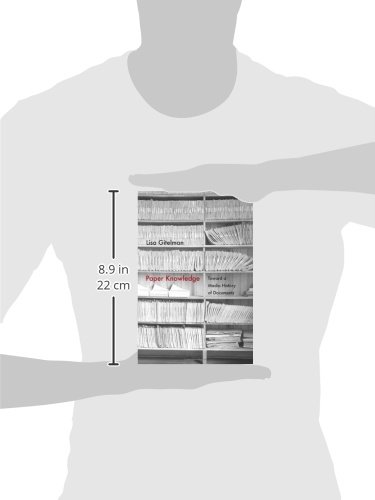



Full description not available
C**L
Arrived in perfect condition!
Impressed with the shipping/packaging of this book! Great product as well.
C**Y
this is one of the most useful.
A ground-breaking study that covers much original phenomenon. In the absence of a more systematic study of paperwork, this is one of the most useful.
C**N
Excavating the Near History of Documents
An interesting study of the near history of documents (last 150 years) examined through 4 'episodes', printing blanks (early 20th century), typography (1930s), xeroxing (1970s) and portable document format (1990s) plus an afterword on zines along with discussion of some socio-cultural environments such as the emergence of office bureaucracy, the place of the author and the amateur and the long-standing and ongoing debates around scholarly communication as well as revisiting the less self-evident than it seems documentalist question What is a Document?This was an intriguing media history approach to the topic of documents. I would recommend it not just to those with an interest in media or history but to librarians and information scientists who are interested in seeing the history of documents from the perspective of another discipline. It is a short book but not necessarily a quick and easy read. It requires a clear head and close reading to fully appreciate but there are some thoughtful ideas in here. I really liked the ongoing discussion of fixity and fluidity and document as genre. I also liked how Gitelman critiqued ideas of print and print culture and pointed instead to the Raymond Williams framework of dominant, emergent and residual media and also processes of remediation as part of a diverse scriptural economy rather than one split into distinct eras. The faint suggestion of a metadata pre-history in blank pro forma was intriguing and the chapter on typescript was also a study of earlier contexts and debates on research methods and scholarly publishing that provide connections and counterpoints to current scholarly precoccupations.At times, however, I found the tightly wrapped combination of history and theory a little too dense and intricate to follow the thread of the narrative or argument clearly. Sometimes it felt like too much effort was required to tease out an idea than the point was eventually worth. I also enjoyed the introduction and earlier chapters more than the later chapters. Perhaps this is because as Gitelman acknowledges it becomes harder to find outstanding exemplars, particular for the PDF chapter. The strength of the first chapters lies in the more detailed analysis of anecdotes, examples and evidence that anchors the theory. In later chapters, with less solid case studies, the theory tends towards generalisations, exemplified only briefly. It lost the macroscopic quality of the earlier episodes that skilfully wrapped big questions in small examples and so I felt the PDF chapter fell slightly short in its task of exploring what distinguishes a digital document.
Trustpilot
3 days ago
1 month ago